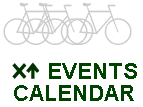P.R. Cycle: Critcal Mass
http://www.nytimes.com/2005/10/02/magazine/02consumed.html
October 2, 2005
By Rob Walker
It has been a little more than a year since the Republican National Convention took place in New York City. The event, as was expected, met with a certain amount of local criticism and disdain, some of which took the form of protests that were followed by arrests. One of the more spectacular incidents involved thousands of bicyclists. “Surging up Sixth Avenue, then across town and down to the East Village, they’d taken over the streets, blocking traffic, infuriating commuters and taxi drivers and reveling in their own numbers,” Salon, the online magazine, reported at the time. “More than 250 people were arrested.”
More Columns: Consumed Technically, this was simply the latest installment in a recurring bicycle event known as Critical Mass, which had been going on for years, largely ignored by the police and, it seems fair to say, by the vast majority of New Yorkers. But this particular installment was, for Critical Mass riders and supporters, a kind of branding event.
Part of the conceit of Critical Mass is that it is not organized or led by anyone in particular; it simply happens. Political confrontation in New York notwithstanding, the rides actually began in San Francisco in the early 1990’s, when cyclists who worked downtown began biking homeward, west up Market Street, as a group. (The name is borrowed from an anecdote about Chinese cyclists who wait until a critical mass of riders can move into the street and essentially force car traffic to adjust.) Critical Mass rides soon started in New York (among other places), where they are now closely associated with the environmental group Time’s Up, which posts information about the rides and many other cycling events on its Web site.
People join in for a variety of reasons, according to Jym Dyer, who has participated in many of the rides, first in Berkeley and now in New York. Critical Mass can be seen as a method of encouraging biking in the city, a declaration of the need to make New York safer for cyclists, a statement about reclaiming public space or a way to draw attention to the environmental impact of car culture. The ride coinciding with the Republican convention was on “all the protest calendars” and received a lot of advance publicity, says Leah Rorvig, a Time’s Up volunteer. “Critical Mass is a really easy, really fun thing,” she adds. Instead of standing with a sign for hours, you can move around and meet people, “and you’re expressing an idea of dissent.” The fungible meaning of Critical Mass, combined with the influx of people who came to New York for the purpose of expressing dissent, contributed to the enormous turnout.
This changed the dynamic between Critical Mass and the city government: the rides continue every month, departing from Union Square as before, but now result in a lot of police officers, arrests and criminal charges. (Because of Critical Mass’s supposed spontaneity, no one ever applies for any kind of permit.) The resulting steady press coverage has made Critical Mass far better known than it was before the Republican convention, but it has not done much to clarify the meaning and message of the rides, let alone any particular political agenda. Harris Silver offers a perspective as both a founder of Citystreets (“a pedestrian rights and advocacy group”) and as president of an advertising and branding agency called Think Tank 3. Yes, he concedes, Critical Mass has a much higher profile now. On the other hand, “More people know about Enron after it went bankrupt,” he says. “Is it better for the brand?” In other words, he wonders if perhaps Critical Mass has squandered its fame: instead of converting any public sympathy into specific improvements for New York cyclists, it has simply become known for defiance and arrests.
Critical Mass participants, of course, take a different view, arguing, for example, that the attention has inspired new cycling groups to form and more people to switch to commuting by bike. Ryan Kuonen, who participates in a somewhat newer (and less aggressively policed) Critical Mass ride in Brooklyn, feels that the “protest” label is misleading, but also figures that getting noticed has had its upside. “It’s in the tabloids; it’s all over the place,” she says. “Whether or not people support what we’re doing, I don’t know. But they know we’re Critical Mass, not just some random freak show on bikes.”
Copyright 2005, New York Times, Inc.

